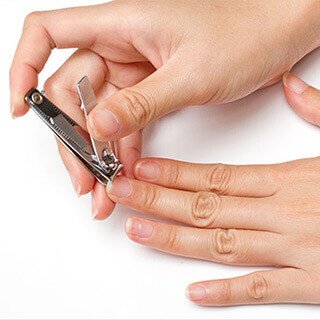Changes In Your Nails During Treatment
 Many patients who undergo chemotherapy are surprised to learn that their nails can become brittle or discolored, crack easily, or even fall off.
Many patients who undergo chemotherapy are surprised to learn that their nails can become brittle or discolored, crack easily, or even fall off.
If you think about it, the only parts of the human body which continue to grow after adulthood is reached are the hair and nails. In other words, if it ever needs trimming, there’s a chance that it will be affected by chemotherapy.
The reason that nails are affected is identical to the reason hair is affected. Cancerous tumors are made up of rapidly dividing cells, which chemotherapy targets. But rapidly dividing cells are also crucial to the formation of hair and nails, and chemotherapy is unable to distinguish these “good” cells from the cancerous ones that it seeks to destroy. The end result is hair loss and weakened or otherwise damaged nails.
For best results, patients who wish to take care of their nails during chemotherapy should keep these tips in mind:
- Fake nails should not be used. The adhesive with which they are applied may worsen the condition of your real nails.
- Nail polish is okay, and may be useful in covering up nails that are discolored. However, frequent use of polish remover may make nails more brittle.
- Nails should be kept clean, dry and trimmed.
- Massage a strong moisturizing creme into the nail and nail bed a few times a week to promote healthy cuticles and encourage regrowth.
- Nails should be also be kept neatly filed to keep them from catching on fabric or other items, which could cause the nail to break or tear.
- Wear gloves when performing tasks that expose the nails to harsh chemicals or other damaging environments. This includes washing dishes, scrubbing walls, baseboards or floors, gardening, etc.
- Your immune system is likely to be compromised by treatment, so it's especially important that you try to avoid any injury to the nails or cuticles that might lead to infection. If you feel that you must have your nails done, make sure your manicurist is informed of this.
- Notify your physician if you develop redness or other changes around the cuticles, or if a nail falls off.
- Fingernails are more likely to be negatively affected by treatment than toenails, due to their more rapid growth pattern.
- Nails typically grow at a rate of .05 to 1.2 millimeters per week. If a nail is lost, it can take more than 6 months for it to grow back.
Naturally, treatment for cancer brings a lot of changes to the body, many of which rightfully get more publicity than nail problems. But nails are important for the protection of fingertips and toes, and attention to their care during chemotherapy should not be overlooked.







